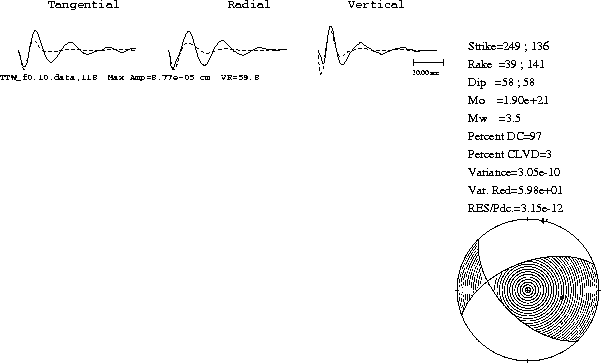
Seismograms from three broadband stations were immediately available to examine this aftershock (TTW dist=17 km, LTY dist=107 km, and RWW dist=153 km). This earthquake is relatively small and the amplitude of energy radiated at long periods (> 10 s) is not much larger than background noise at larger distances, hence station RWW was not used. Unfortunately the two remaining stations have very similar propagation azimuths from the earthquake (~120 degrees), which leads to some redundancy in the data used and degrades the solution accuracy.
The preliminary depth from the network is 5.7 km. In the inversions, source depths of 5, 8, 11, and 15 were tested; 8 km produced the best measure of data fit. Seismograms show displacement at 10 to 25 second period. Each seismogram is 80 seconds long. Observed seismograms are solid, theoretical seismograms are dashed.

Below is the result assuming a depth of 5 km. Note the change in mechanism (from above) and the worse fit-to-data, particularly at station LTY.

Below is the result assuming an 8 km source depth using only the nearest station (TTW). This mechanism is similar to the preferred solution above.
 _________________________________________________________________________
_________________________________________________________________________
Back to:...
UW Dept. of Earth and Space Sciences ..... PNW EARTHQUAKES